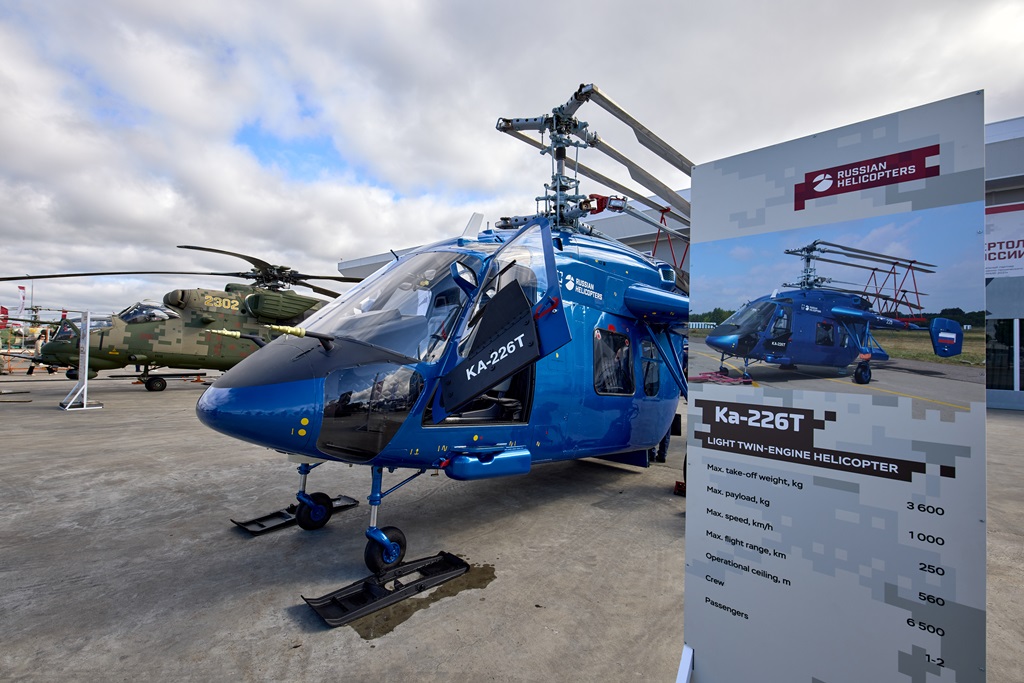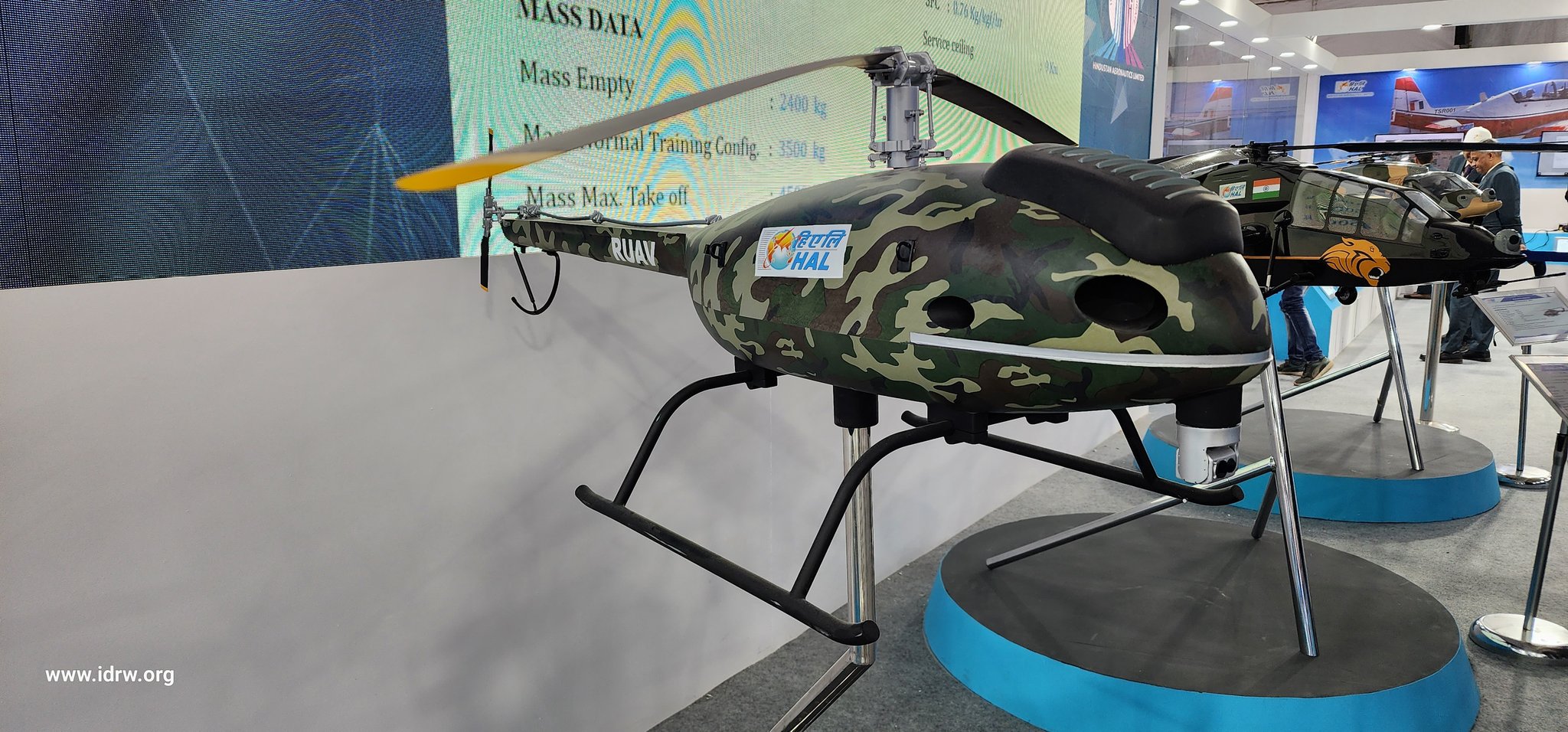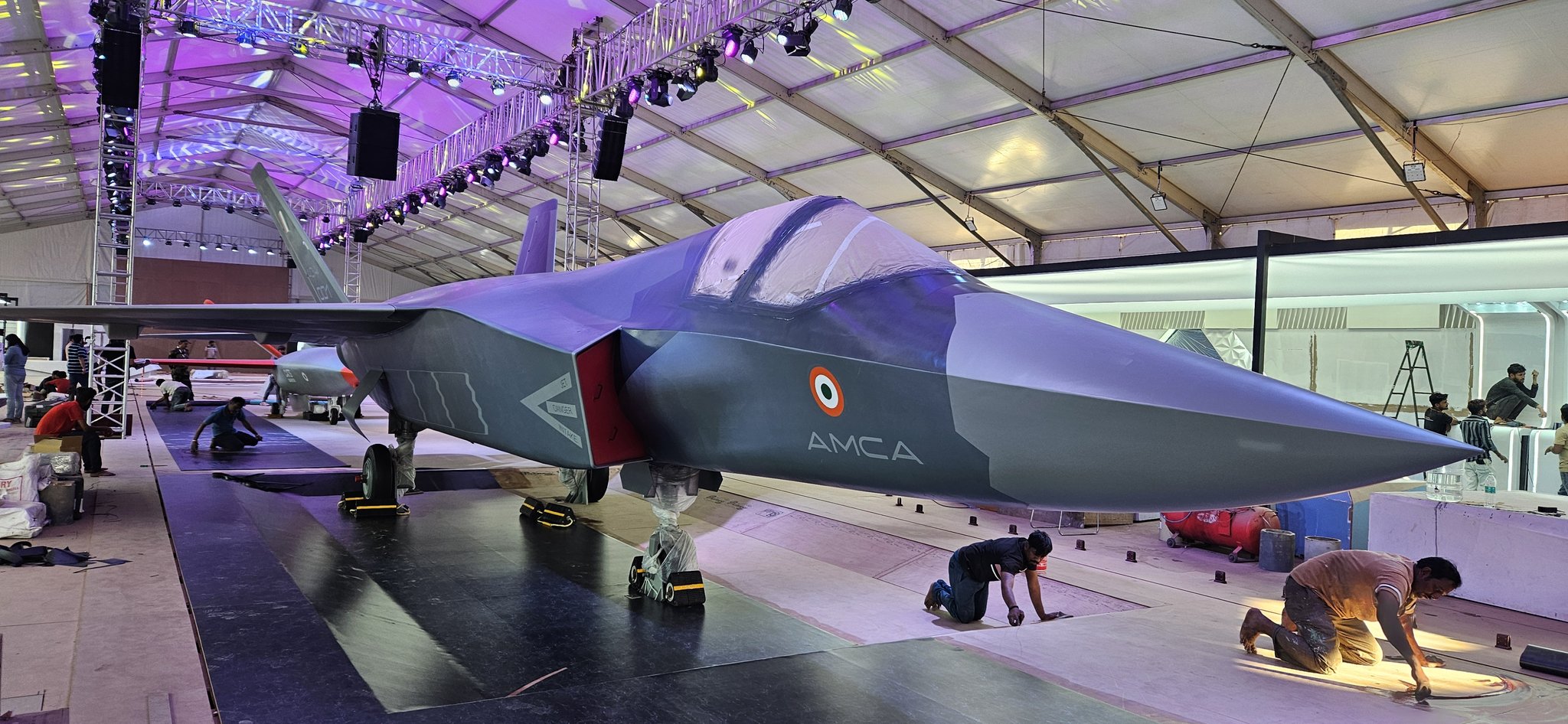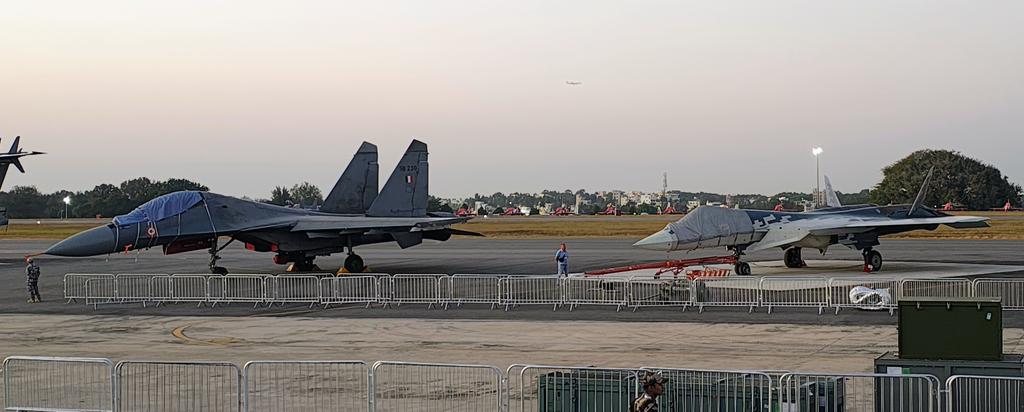SOURCE: RAUNAK KUNDE / NEWS BEAT / IDRW.ORG

In a significant development for bilateral defence cooperation, Russian officials have confirmed to idrw.org that they have re-offered the Ka-226T helicopter to India, this time equipped with the indigenous VK-650V engine instead of the previously intended French Turbomeca Arrius 2G1. This move aims to overcome previous hurdles related to the localization of production and engine supply issues.
The VK-650V is Russia’s first helicopter engine in the 650-750 horsepower range, tailored for helicopters with a takeoff weight of up to 4 tons. Its introduction is a strategic response to replace foreign engines in both the Ansat and Ka-226T helicopters, enhancing the autonomy and versatility of these aircraft.
Continue readingSOURCE: RAUNAK KUNDE / NEWS BEAT / IDRW.ORG

Solar Group has received approval for developing a Medium Altitude Long Endurance (MALE) drone, a significant step forward in India’s efforts to bolster its defence capabilities. This new program, being closely overseen by the Indian Army and the Indian Air Force (IAF), is poised to provide India with advanced surveillance and reconnaissance that will enhance its operational readiness.
The Solar Group, as part of its commitment to meeting the requirements of the Indian Armed Forces, plans to work closely with the military to ensure the drone is equipped with the latest technologies and features that the forces need. The Indian Army and IAF will jointly define the technical specifications for the MALE drone, with both services collaborating on setting the design and performance criteria for the system. The final product will be tailored to meet the specific demands and expectations of the Indian defence forces.
Continue readingSOURCE: AFI

In a move that has stirred significant controversy within the French defense community, the Aeronautical Development Agency (ADA) of India has recently confirmed the design for their Twin Engine Deck Based Fighter (TEDBF), which bears striking similarities to the French Rafale fighter jet. This development has led to a flurry of reactions on social media, particularly on X, where sentiments range from accusations of copying to more nuanced views on design inspiration.
Sébastien Clavier, a notable voice in the French defense community, expressed his dismay on X, stating, “India is quietly making an exact copy of the Rafale…” His comment reflects a broader concern among some French observers about intellectual property and design rights. This sentiment was echoed by others in the community, highlighting an underlying tension regarding technology transfer and international defense collaborations.
Continue readingSOURCE: AFI

@connect_rishav
In an unprecedented display of modern aerial might, a rare photo capturing the Russian Sukhoi Su-57 Felon alongside the American Lockheed Martin F-35 Lightning II has gone viral on X, marking the first time these two fifth-generation fighter jets have appeared together at an airshow. The historic moment occurred at Aero India 2025, held in Bengaluru, providing a spectacular showcase of advanced military aviation technology from two of the world’s superpowers.
The viral image, shared by numerous enthusiasts and aviation analysts on X, captures the two jets in what appears to be a moment of static display or perhaps during taxi maneuvers, showcasing their sleek designs and advanced aerodynamic features. The backdrop of the Indian sky adds an exotic touch to this rare encounter.
Continue readingSOURCE: AFI

Hindustan Aeronautics Limited (HAL) is set to showcase the prototype of the RUAV-200, a high-altitude, medium-endurance drone, at the upcoming Aero India event. This drone, also known as the Rotary Unmanned Aerial Vehicle (RUAV), marks a significant advancement in India’s unmanned aerial technology, specifically tailored for the challenging terrains of high-altitude regions.
Developed for surveillance, reconnaissance, and target acquisition, the RUAV-200 is engineered to perform in extreme conditions. Its coaxial, rotary-wing design with a fuel engine makes it unique among UAVs, offering stability and endurance in high-altitude environments.
Continue readingSOURCE: AFI

Dynauton Systems, an innovator in the unmanned aerial vehicle (UAV) sector, is poised to make a significant impact at Aero India 2025 with the unveiling of its PATANG® Tethered UAV System. This advanced system is engineered for providing real-time operational field surveillance, promising to redefine how surveillance is conducted in various environments.
Unlike traditional drones limited by battery life, PATANG leverages a tether system that provides continuous power, allowing for extended flight times. This feature is critical for long-duration surveillance missions.
Continue readingSOURCE: IDRW.ORG

In a significant display of India’s indigenous defense capabilities, the Defence Research and Development Organisation (DRDO) has, for the first time, showcased the Naval Anti-Ship Missile-Medium Range (NASM-MR) at Aero India 2025. The missile was prominently featured on the Indian Navy’s MiG-29K, highlighting its integration into naval aviation.
The NASM-MR is designed as a versatile, all-weather, over-the-horizon anti-ship cruise missile, tailored to engage small to medium-sized warships at a range of approximately 300 kilometers. This capability significantly extends the Indian Navy’s reach and lethality in maritime combat scenarios.
Continue readingSOURCE: IDRW.ORG
Hindustan Aeronautics Limited (HAL) is likely to switch to the locally developed Quartz Radome for the Active Electronically Scanned Array (AESA) radar of the Tejas Mk1A fighter jets. The transition is expected to take place for the second batch of 97 Tejas Mk1A aircraft, currently under consideration by the Indian Air Force (IAF).
According to sources at idrw.org, the locally developed quartz radome will soon undergo rigorous testing. If the test data meet the required performance standards and the IAF is satisfied with its capabilities, the switch from the imported Cobham-supplied radome to the indigenous version will be implemented. However, this change may not be applied to the first batch of 83 Tejas Mk1A aircraft already ordered by the IAF.
Continue readingSOURCE: AFI

IMAGE CC Vayu Aerospace Review
The Aeronautical Development Agency (ADA) has come under intense scrutiny after showcasing what appears to be an outdated 1:1 scale model of the Advanced Medium Combat Aircraft (AMCA) at Aero India 2025. The model, initially thought to represent the latest design iteration, has instead been identified as belonging to an older version of the jet, leading to widespread frustration among enthusiasts and experts on the social media platform X.
The model in question, which was displayed at the Hindustan Aeronautics Limited (HAL) Pavilion, was supposed to symbolize the pinnacle of India’s aerospace development efforts. However, keen observers quickly pointed out significant discrepancies. Notably, the model featured longer, connected horizontal swash plates in one variant and connected swash plates with vertical stabilizers in another, elements that do not align with the latest design iterations intended for production.
Continue readingSOURCE: AFI

At Aero India 2025, the Indian Navy’s MiG-29K was prominently displayed, equipped with a cutting-edge piece of technology from Belarus—the ADS ‘Talisman’ pod developed by Defence Initiatives. This integration marks a significant upgrade in the MiG-29K’s defensive capabilities, showcasing India’s ongoing efforts to enhance its military aviation with state-of-the-art technologies.
The ADS ‘Talisman’ is a sophisticated electronic warfare system designed to provide comprehensive protection to operational aircraft against a wide array of threats.
Continue readingSOURCE: AFI

@connect_rishav
A captivating image from Aero India 2025 showing the Sukhoi Su-30MKI and the Sukhoi Su-57 parked side by side has gone viral, captivating the Indian defense community. The juxtaposition of these two formidable aircraft has not only highlighted their physical differences but has also sparked a flurry of discussions and debates about their capabilities, roles, and the future of air combat within the Indian Air Force (IAF).
The image, which spread like wildfire across social media, showcases the Su-30MKI, a mainstay of the IAF, appearing larger and somewhat more imposing next to the Su-57, Russia’s latest fifth-generation stealth fighter. The Su-30MKI, with its twin tails and canards, has a visibly larger profile, which has led to many enthusiasts commenting on its sheer size and perceived robustness.
Continue readingSOURCE: AFI

AjnaLens, a pioneering private sector company in India, is set to make waves at Aero India 2025 by showcasing what is described as India’s first AI-powered, military-grade Mixed Reality (MR) solutions. This announcement marks a significant milestone in the realm of defense technology, blending artificial intelligence with mixed reality to offer cutting-edge capabilities to India’s armed forces.
AjnaLens has been at the forefront of integrating advanced technologies to create solutions that enhance operational efficiency and decision-making in defense scenarios.
Continue readingSOURCE: AFI

In a significant stride towards bolstering India’s indigenous defense manufacturing capabilities, the BrahMos Aerospace Plant is gearing up to commence operations in Uttar Pradesh (UP). Located in the strategic Bhatgawa village of Sarojini Nagar, within the Lucknow Defence Node, this new facility promises to be a game-changer in missile production.
The plant is specifically designed for the production of the BrahMos-NG (Next Generation) variant, a smaller, lighter, and more advanced version of the renowned BrahMos missile. With an anticipated production rate of 80 to 100 missiles annually, this facility will play a pivotal role in enhancing the Indian armed forces’ tactical flexibility and response capabilities.
Continue readingSOURCE: RAUNAK KUNDE / NEWS BEAT / IDRW.ORG

The Aeronautical Development Agency (ADA) has made a decisive move in the development of the Twin Engine Deck Based Fighter (TEDBF) by confirming the adoption of a singular design, previously showcased at Aero India 2023. This design, which has now been solidified, adopts a look reminiscent of the Dassault Rafale but uniquely incorporates Diverterless Supersonic Inlets (DSI).
At the Aero India 2023 event, ADA introduced a significant evolution in the TEDBF’s conceptualization, moving from an angled, stealth-oriented nose to a more blunt, rounded nose cone. This design maintains the leading-edge extensions (LEX), canards, and DSI, features that were part of the previous iterations but now set in stone for the production model.
Continue readingSOURCE: RAUNAK KUNDE / NEWS BEAT / IDRW.ORG

The Defence Research and Development Organisation (DRDO) is reportedly in the early stages of developing a new class of Beyond Visual Range Air-to-Air Missiles (BVRAAM) that will follow the Astra MkIII, one of the most advanced air-to-air missiles in India’s arsenal. According to reports from idrw.org, the conceptual studies for this upcoming missile system are already underway, with the development focusing on cutting-edge technologies that will push the capabilities of the Indian Air Force (IAF) to new heights.
Among the various technologies being considered for the next-generation BVRAAM is the Triple Pulse Solid Motor. This innovative motor design is viewed as a potentially cost-effective alternative to the SDFR-based propulsion system. The Triple Pulse Solid Motor aims to deliver the same range and performance as the Astra MkIII, but in a much more affordable manner, thus making it a promising candidate for India’s future BVRAAM program.
Continue reading